










 |
 |
 |
 |
 |
 |
|
 |
|
|||||
 |
 |
 |
 |
|
Smithsonian
to Exhibit Rare Pearls |
||
A pearl once owned by builder of the Taj Mahal, another on loan from actress Elizabeth Taylor and the Hope Pearl-a former partner to the Hope Diamond - are among a dozen of the world's rarest pearls going on display at the Smithsonian's National Museum of Natural History. "The Allure of Pearls brings together a tremendous collection of some of the rarest, largest and most spectacular pearls in the world," said Jeffrey Post, curator of the museum's National Gem Collection. And it's not just the beauty of the pearls. "There's a story with each one and that makes them interesting." Post said in previewing the collection. |
||
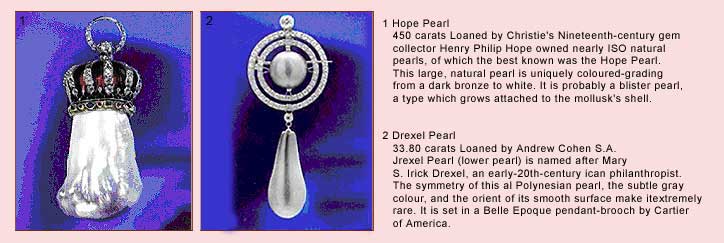 |
||
The exhibit will bring together - for the first time in more than 150 years - the Hope Pearl, once owned by London banker Henry Philip Hope, and the famous Hope Diamond, named for the same former owner. The Hope Pearl, white at one end blending to greenish bronze at the other, set with a gold and red crown, measures 2 inches by 41/2 inches. The famed blue Hope Diamond has for years attracted visitors to the museum's Harry Winston Gallery. The two were last together in 1839 when Hope died and his collection was dispersed. "At least for this summer they will be back together in the same room," Post said. |
||
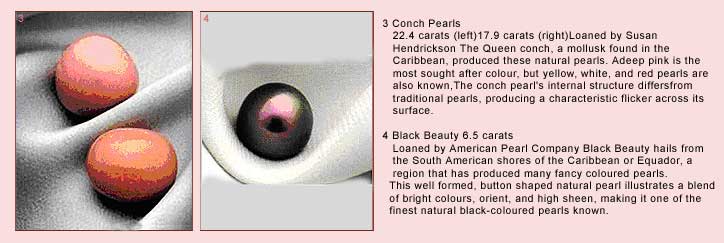 |
||
The Hope is on loan from an anonymous collector in England who also provided another prize, the Pearl of Asia. Sometimes called the Star of Asia, it is said by some to be the world's largest natural pearl. Neither pearl has been on public display for more than 40 years, Post said. |
||
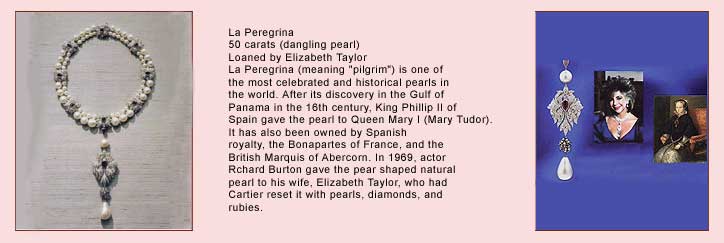 |
||
The Pearl of Asia was discovered in the Persian Gulf and became the property of Shah Jahan, the 17th century Moghul ruler of India who built the Taj Mahal. This giant pearl was taken by the king of Persia, who gave it as a gift to the Emperor of China, who had it put in his tomb. Grave robbers later stole the pearl and it passed through many hands before becoming the property of Its current owner. |
||
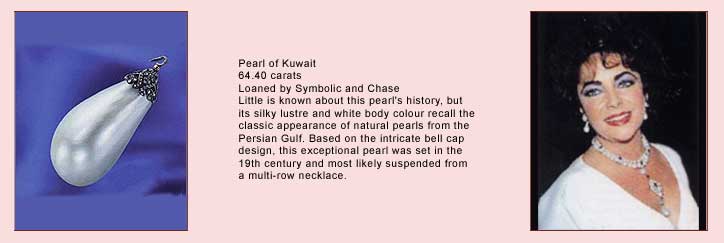 |
||
Another highlight of the exhibit, which opens on March 18 and runs through September 5, is "La Peregrina," discovered in the 1500s off the coast of what is now Panama and brought to Spain's King Philip II, who gave it to his wife, Queen Mary Tudor. Later owners have included Joseph Bonaparte and French Emperor Napoleon III. In 1969 the large, pear-shaped white pearl was purchased by actor Richard Burton for his wife, Elizabeth Taylor, who still owns it. |
||
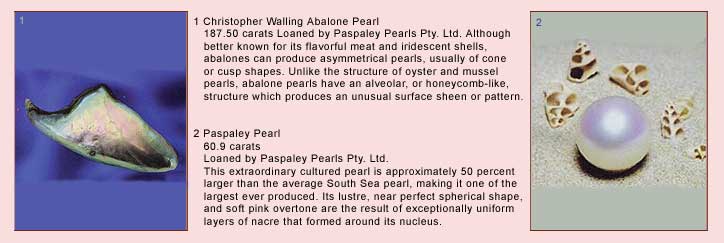 |
||
"La Peregrina," which means the pilgrim or wanderer, will be shown in its diamond, ruby and pearls necklace, designed by Cartier and Taylor. Other rare pearls in the exhibit include: -The Drexel Pearl, a large natural gray pearl from Polynesia in a Cartier setting from 1905. It is named for Mary S. Drexel, who with her husband were known for their support of Drexel University. |
||
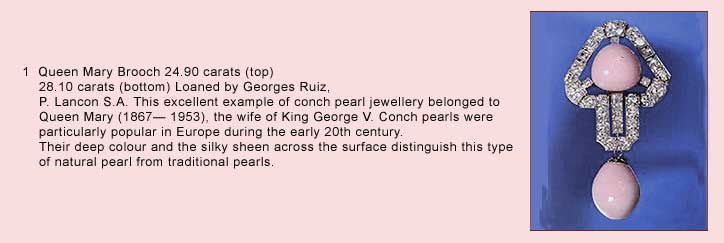 |
||
-Black Beauty, an eggplant-colored natural black pearl from South America. -The Pearl of Kuwait, a natural drop pearl from the Persian Gulf. -The Queen Mary Brooch featuring two large natural pink conch pearls in a 100-year-old setting, once owned by Queen Mary, wife of King George V of England. -South Sea Drops, two rare natural South Sea pearls. -The Survival Pearl, reputed to be the world's largest pink snail pearl, a fresh water pearl found in the United States. -The Paspaley Pearl, one of: the largest cultured pearls in the world, on public display for the first time. |
||
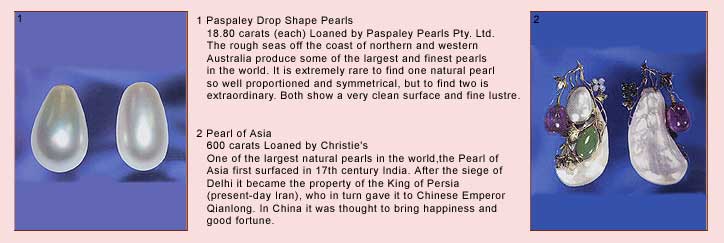 |
||
Pearls, popular as ornamentation from ancient times, are made from calcium ' carbonate by a variety of mollusks in warm fresh and sea waters around the world. The mollusk protects itself by coating foreign objects such as a piece of shell or parasite, with calcium carbonate. This becomes the nucleus of the pearl, which continues to grow with subsequent coatings. Among the mollusks that can produce pearls are mussels, oysters, clams, snails, conch and abalone. |
||
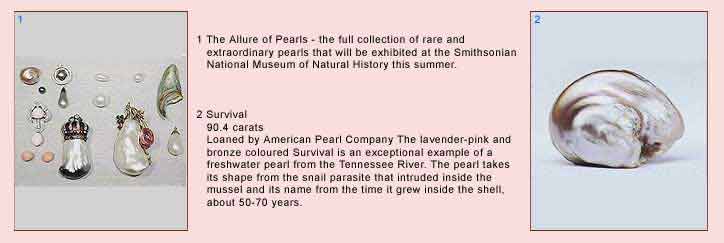 |
||
| The Allure of Pearls
exhibit is, supported by Paspaley Pearls Pty. Ltd., Iridesse Pearls and
the Gemological Institute of America' (GIA). Story: The Associated Press Pictures: Smithsonian's National Museum of Natural History |
||
COPYRIGHT
© 2000 - 2016 D4UWEB.COM ALL
RIGHTS RESERVED PATENTED | COPYRIGHT ACT INFO | TRADEMARK INFO | PRIVACY POLICY | TERMS OF USE |